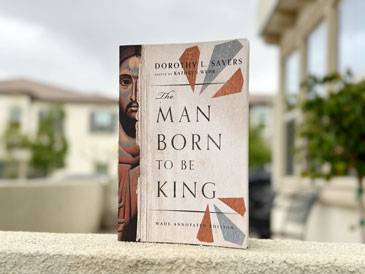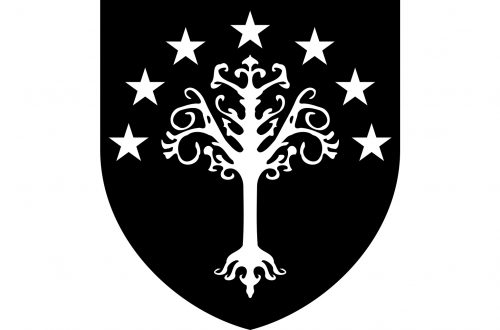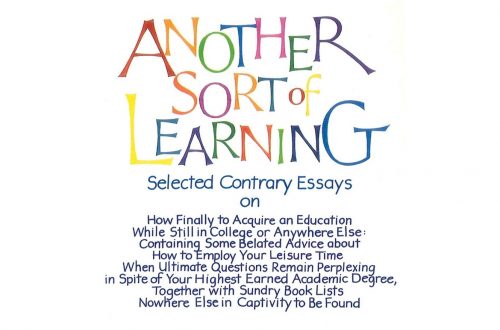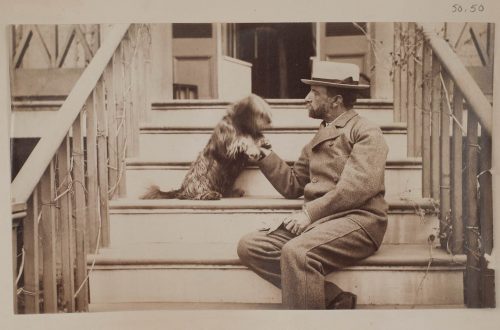a conversation with Dr. Kathryn Wehr
There once was a particular cycle of plays on Jesus’s life that English novelist and theologian C.S. Lewis was in the habit of reading every holy week. The author of these twelve plays was his friend Dorothy Sayers, to whom he confided in a letter that her work had made him “shed real tears (hot ones) in places.”
Until recently, The Man Born to Be King was out-of-print and only available to readers as a print-on-demand item. However, Sayers’ unique take on Jesus’ life and ministry has a great deal to offer a contemporary audience. This became abundantly clear to me as I sat down with Dr. Kathyrn Wehr recently to discuss her work on The Man Born to Be King. At a moment when the television series “The Chosen” has created renewed interest in the life of Jesus, Sayers’ unique theatrical presentation was ready for a revival. The cycle of plays was originally written by Sayers at the request of the the Religious Broadcasting Service, and performed live on the radio from 1941 to 1942. Her ongoing correspondence with the head of Religious Broadcasting and also the decisions that needed to be made along the way about how to tell the story of Christ in a fresh way to a radio audience while remaining true to the scriptural sources of the gospels are all part of the story that Katy had to recount for us.
Veritas Journal: So Katy, for starters, why do we need this book now? Why should it be interesting to our readers in our current moment?

Dr. Kathyrn Wehr: It has been out of regular print for a while. Also, this is the 80th anniversary of its first publication. The plays deserve to be read, too. Despite being hard to get a hold of, they are still read, particularly in classical schools. I also did a book group on the plays with about a dozen people through Anselm House (an on-campus community connecting faith and learning at the University of Minnesota) some years ago. In those discussions, people would ask: which gospel is this story from? Or, what part of the Old Testament is being quoted? So I was wishing there was a version with at least Bible references. So that’s one of the awesome features of this edition. Which is helpful both for those who know the Bible and those who don’t. Sayers works really hard to harmonize the accounts; if a story appears in multiple gospels, she works out the details. So, it’s nice to be able to show that in footnotes. There are stories, of course, which appear in all gospels, particularly when we get to the Passion.
Also, in my Ph.D. work, I researched specifically how her theology is shown within the plays. When I started, there was not a singular scholarly article on the plays. A lot of her biographers would say: “she relies a lot on John” or “she really shows Christ’s humanity.” I had two questions: How do we know that she leans so heavily on John? Second, how does she actually show Christ’s humanity? So I ended up making a chart of every scene and sequence of the plays and all the Scripture she uses. I took the idea of the synopsis of the four gospels and added a fifth column for Sayers’ plays so I was able to see what is she using and what isn’t she using; it was a way to analyze in a more precise way what percentage of this or that source she was using. She does seem to love the stories from John and uses a lot of them, but if you look at actual bulk material, Matthew outweighs John, but they’re used very differently, and this method was useful in teasing those differences out. As a playwright, she does seem to prefer having four different takes and enjoys blending them together. In this edition, I included a complete Scripture index, with thousands of Bible references.
Say, can you unpack the title for us a little, The Man Born to Be King?
Yes! From the very beginning she told James Welch (who was the head of Religious Broadcasting): I want to take as my theme the kingship of Christ. So we know that was her plan. A lot of them have subtitles like: “royal progress” or “kings in Judea” or “a king comes to his own” so she uses the king language in the titles a lot. And she’s definitely contrasting the kingdom of Rome to the kingdom of Israel to the kingdom that Jesus seems to be talking about. I will say there’s a part in play twelve where I wonder if she hasn’t really answered the question she herself set out to answer (that of what does it mean for Christ to be king) because it’s a point where the disciples are discussing Peter as the foundation of the church. They are asking one another: why did Jesus appear to Peter and not the rest of us? (He’s about to, of course, in the next scene, but they don’t know that!) So they were having this debate. So they ask John about it: so, you were his particular friend, why didn’t he appear to you? And he says, well, the church is to be founded on Peter and I think the church has to be a little more – what’s that Greek word? – “catholic.” But then another disciple says: Why are we talking about the church? I thought we were waiting for the kingdom! So she doesn’t really answer where the line is, or where that exact overlap is.
Well, that sounds like a question we’re still asking! So, you mentioned a few characters, including Jesus. What would you say is the main perspective? Whose shoes are we invited to stand in?
So, there aren’t any soliloquies. Most sections are introduced by a character named “Evangelist” who’s quoting directly from the King James version, so there’s always that outside storyteller perspective at the beginning and end of each scene. We definitely see things from the point of view of the disciples, and the ones we get to know the most are John, Matthew, James and Andrew and, of course, Judas. She really wrestled with how to characterize Judas. She was one of the first to really give a psychological expression to his character. So often he’s just the “baddie” but she has this other take. This is actually a very interesting contrast to other approaches to Judas. For example, The Chosen has a very different take on what Judas is up to. Sayers characterizes Judas as the intellectual one, who’s super smart. He’s the only one who seems to understand what Jesus is talking about when he’s being more obscure, such as talking about the fact that he needs to suffer. But his downfall is that he trusts his own judgment over Jesus, so he’s unable to trust Jesus and that’s what creates this wedge between them and so then eventually he becomes convinced that Jesus is secretly doing something else on the side.
How ironic! (He too seems to have had something else going on on the side.)
Yes, so Judas is developing this idea of himself as a kind of right-hand man who’s going to help steer the government for this coming kingdom. And so the high priest then kind of uses this desire. The leaders see how smart he is, while being addicted to his own ideas. So they see that in order to convince him to turn Jesus in, they pitch it to him to let him die now so he can be remembered as the “pure” version of Jesus before manages to betray his own principles. They flatter him: “You, Judas, understood so clearly. This way Jesus can be someone people can be inspired by, but it won’t ruin this status quo and delicate balance we have going on with the Romans.” So it’s a really powerful take.
In a dramatic way, her interpretation of Judas depends a lot on a character named Baruch, a zealot. He’s one of the fictional characters and plays a really important role because he becomes this kind of “bad angel” on Judas’ shoulder. They meet when Judas and Phillip are sent out “two-by-two” and they end up staying in a house with Baruch and his wife. Baruch is deeply involved with the zealots and insists that all they need is a figurehead for the people to march behind, and Jesus could be that person. (By the way, Baruch later sends a letter to Jesus saying that if Jesus wants to accept their help, to take the war horse in a stable; but if not, take the donkey.) And Judas insists initially that Jesus is not that corruptible, but their conversation starts planting doubts in Judas’ mind. Baruch also serves as his voice of conscience, so after Judas betrays Jesus, he runs into him again and Baruch can tell from the things Judas is saying and not saying that he was the one that actually betrayed Jesus. (By the way, Judas has an odd, masochistic take on suffering, so Baruch gives him what-for for not being there to defend Jesus, and also asks him why he wasn’t willing to suffer with him if he really believed in him.) Judas himself is haunted by the idea that Jesus is in cahoots with Baruch, which is why he betrays Jesus, because he thinks Jesus has gone against all his principles.
It’s so interesting that Sayers feels such artistic freedom, or “historical freedom” (as she puts it in the preface) to create something new to explain Judas’ decision.
She actually writes about that very thing in her letters, that the corruption of the best is the worst corruption. He could have been the greatest; he could have been the Apostle Paul. I bumped into many of these things reading through all her letters. She was a prolific letter writer. The Wade Center at Wheaton College has 30,000 pages of her letters. They graciously collected for me all the ones where The Man Born to Be King is mentioned – 10 folders-worth! I read through all of them. People would write to her – either the head of Religious Broadcasting who was producing the plays – or listeners will write to her and ask her: “why did you show this person or that person in this light?” and she’ll write back.
Actually, how Jesus and his followers are perceived seems to be at the heart of this project!
Yes! Reading her letters with the head of Religious Broadcasting (the group that initially engaged her for this project) made it clear to me that she was really trying to address different theological currents at the time. They talk about how there’s both a real Arian undercurrent (“Jesus is a good man”); but also a Docetist tendency among Christians who want Jesus to have a voice (as she says) “as if he lived permanently in church.” Or, as she says elsewhere, these people are painted as if they’re just “in stained glass.” By contrast, she really wants to show that Jesus’ followers were real and that they didn’t necessarily understand what Jesus was saying or why he was doing it; they may have only encountered him that one day!
Speaking of encounter, when and how did you personally come upon these plays?
I read them for the first time when I was a student at Regent when I was doing my “Christianity and the Arts” Masters there. It was a book review assignment, and because I was a theater major, I thought, “Oh great! Drama.” That was the gateway. Some of my first questions were the things I ended up wanting to address in my later work here.
For example, I was really bothered by how Sayers conflated Mary of Bethany and Mary Magdalene. So it was interesting to dig into that, because actually at the time it wasn’t self-evident that they were two different women. It wasn’t until the 1960’s that Mary of Bethany was given a different feast day, for example. But Sayers addresses this question when a reader writes to her and says why did you make these into a single character? She usually says, well, there’s a long tradition in the church, but she also says, you know, as a playwright I can’t handle all these Marys! It’s just confusing!
What’s the best way to experience these plays? Readers’ theater, or listening to the old radio plays, or reading it yourself? Here I have your lovely edition in hand; what should I do next?
I really love reader’s theater! Particularly in a classroom: read them aloud. My edition would work really well as a teacher’s edition, by the way, because of the references and annotations. I do love the recordings; they’re available on Audible now. The difference is, those are cut down from the whole plays. I have heard the original recordings from 1941-1942 and I don’t actually recommend those, but you can only access them at the Wade Center and BBC archives anyway. It’s interesting because you can hear them speeding up; they’re recorded live and so sometimes they’ll chuck scenes because they have to be on time. But there are also things that were cut because they were censored. There was a CRA committee (Center of Religious Affairs) which read the plays, which was made mandatory for her after a protest that took place (after it was made public that Jesus’ life would be made into a radio drama). So she doesn’t record anywhere how she felt about it. Some of it was cut for tone, some for other reasons. So, when she published it for herself, which she was allowed to do, she put everything back in that had been cut. So, in the 1942 published edition, she put everything she wanted, all of her notes for the actors, characterization notes, etc. So that’s what makes it different from the 1967 version on Audible. The BBC tended to cut longer speeches and things they thought would be above the heads of normal people. For instance, she has this amazing speech by the Virgin Mary, as she sees Jesus carrying his cross, it’s very theological, she says: “I see now…God is the Truth and I am the Fact, but Jesus is Truth and Fact.” But it’s not there in any of the recordings, because it’s so long.
I’m so glad we can have access to the entirety of this wonderful work, Katy, thanks to your new edition! Thanks for that, and for joining us today.
Thank you! Anyone who is in the Twin Cities area should know that this Thursday evening March 16 at 7pm, I will be having a book event for The Man Born to Be King, and it’s hosted by Anselm House. Please join me if you’re in the Minneapolis-St. Paul area!
To register to attend: https://anselmhouse.org/events
You can purchase The Man Born to Be King at Amazon or at the Intervarsity Press website.
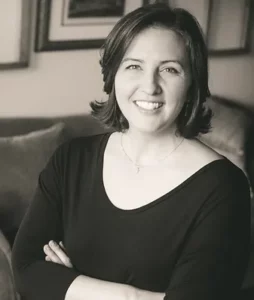
Kathryn Wehr (PhD, University of St Andrews) is a creative artist and scholar. She is the managing editor of Logos: A Journal of Catholic Thought and Culture, published by the Center for Catholic Studies at the University of St Thomas. In addition to editing The Man Born to be King Wade Annotated Edition, she has scholarly articles about Sayers in The Journal of Inkling Studies, VII: The Journal of the Marion E. Wade Center, Logos, and Transpositions: Theology, Imagination and the Arts. She is also a musician with a recent album And All the Marys about the women in the Gospels, partly inspired by her work on The Man Born to be King. www.kathrynwehr.com
Header image: Courtesy of Kathryn Wehr
